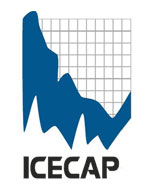By S. Fred Singer. The American Thinker
There is a revolution coming that is likely to burst the green global warming bubble: the temperature trend used by the IPCC (the U.N.’s Intergovernmental Panel on Climate Change) to support their conclusion about anthropogenic global warming (AGW) is likely to turn out to be fake. The situation will become clear once Virginia’s attorney general, Kenneth Cuccinelli, obtains information now buried in e-mails at the University of Virginia. Or Hearings on Climategate by the U.S. Congress may uncover the “smoking gun” that demonstrates that the warming trend used by the IPCC does not really exist.
It has become increasingly clear that any observed warming during the past century is of natural origin and that the human contribution is insignificant. It is doubtful that any significant warming is attributable to greenhouse gases at all.
Once the public accepts these scientific conclusions, it should have immense consequences for policy. It will mean that the impact of rising CO2 levels is negligibly small, as has already been concluded by the NIPCC (Nongovernmental International Panel on Climate Change), a group of scientists skeptical of the U.N.-supported IPCC. It would also mean that wind energy, solar energy, and other “non-carbon” energy sources are not needed and are in fact counterproductive. It would remove the need for alternative fuels such as ethanol (which might please many true environmentalists). It would also mean that carbon trading, cap and trade, and fanciful schemes for carbon capture and sequestration would all end up in the dustbin of history.
One may expect a huge outcry and serious and protracted opposition from those who have built their careers on global warming hype and who have made investments in alternative energy or are looking for immense profits from carbon trading. Yet the scientific facts must win out in the long run—even against the financial interests of favored groups, wind farm profiteers, ethanol refiners, carbon traders, and the investment firms and banks that have placed hundreds of billions of dollars of their clients’ money into green projects.
Nothing has been learned from European disastrous experiences, it seems. As Bjorn Lomborg (a firm believer in AGW) reports, Germany led the world in putting up solar panels, funded by €47 billion in subsidies. The lasting legacy is a massive debt and lots of inefficient solar technology sitting on rooftops throughout a fairly cloudy country, delivering a trivial 0.1% of its total energy supply. Denmark’s wind industry is almost completely dependent on taxpayer subsidies, and Danes pay the highest electricity rates of any industrialized nation. Spain has finally discontinued its solar subsidies as too costly; as Prof. Gabriel Calzada reports, the program actually caused a net loss of jobs.
Having successfully exploited domestic subsidies, Europeans are now looking at the United States as the new “land of opportunity.” A recent example (described in the Wall Street Journal of Oct. 26, 2010) is the world’s largest solar-thermal power plant, on 7,000 acres of Federal land in the desert of southern California. The $6-billion project is a venture by two German companies, and it may be eligible for a cash subsidy of nearly one billion dollars in taxpayer money. Even after these subsidies, the cost of the electricity generated will be 30 to 70 percent more expensive than electricity generated by natural gas, the dominant electricity-generating fuel in California.
In addition to direct subsidies, the companies are seeking federal loan guarantees and, no doubt, an array of benefits from the State of California. Solar Trust of America, a joint venture between Germany’s Solar Millennium AG and privately held (mostly by Arab oil money) Ferrostaal AG, is awaiting approval from the Energy Department for a federal loan guarantee for the first two of its four planned units. Deutsche Bank AG and Citigroup Inc. are working with Solar Trust to obtain project-equity and tax-equity investment.
The White House claims that the federal cash subsidy will create three hundred permanent jobs (at about $3 million per job!). The nature of the jobs is not specified, but one may assume that there will be much need for sweepers to remove dust and dirt from about 7,000 acres of solar mirrors. Not exactly “high-tech,” is it?
Read more here.
Climate Alarmism at the New York Times
By S. Fred Singer
The New York Times editorial page has been persistent in publishing alarmist editorials on climate change. The latest one appearing shortly before the November elections accused politicians of being in “denial” about climate change. What nonsense! Climate is changing all the time; it has been doing it for millions of years—without any human intervention. And politicians are simply trying to stay in step with the public.
There is no credible evidence at all that human activities have had any appreciable influence on global climate changes during the last century. While many scientists still believe in a major human contribution, the number of skeptical scientists has been growing steadily as the evidence against AGW [anthropogenic global warming] becomes ever more apparent.
Just ask yourself: what evidence is there to indicate that any warming over the last century is due to human influences? Not even the UN- supported IPCC has been able to point to any solid facts in favor of AGW. The latest science debate revolves around “finger prints” in the climate record. Do the observations of temperature change in the atmosphere show a certain pattern, which is characteristic of greenhouse warming? The answer is a resounding No.
Without any scientific evidence to support AGW, it is wasteful, counterproductive—and foolish—to institute regulations that limit the emissions of CO2, restrict the use of energy, and misdirect energy policy into such areas wind farms, solar projects, and biofuels like ethanol. For economic survival, all of these require huge subsidies. which are paid for by citizens twice over: first as taxpayers, then as energy users.
The mid-term elections have pointed up the public skepticism about AGW. Supporters of misguided policies to control emissions of carbon dioxide, through “cap and trade” and fuel standards, went down to defeat almost everywhere. California provided the big exception and now faces an economic disaster.
As reported by Cooler Heads Digest: “… the new Republican majority in the House is largely skeptical of the claim that global warming is a potential crisis and is close to unanimously opposed to cap-and-trade and other energy-rationing measures. Not only is cap-and-trade dead, but there is a good chance that the House next year will move legislation to block or delay the EPA from using the Clean Air Act to regulate greenhouse gas emissions.
The question is, can such a measure pass the Democratic-controlled Senate? There is certainly a majority in the Senate for blocking EPA, but sixty votes will be needed. My guess is that there will be more than sixty votes. As EPA regulations start to bite next year, Senators will start to hear complaints from their constituents. And a large number of Democratic Senators are up for re-election in 2012 and will want to avoid the fate of so many of their colleagues this year.
The NY Times may be seriously out of step with its own readers, At least that’s how I would judge the results of a survey of readers of Scientific American, a magazine that has been just as alarmist about AGW as the Times:
**77% believe that current climate change is caused by natural processes
**68% think we should do nothing about climate change, are powerless to stop it
**90% approve of climate scientists debating the issue in public forums
**83% believe that the UN-IPCC is corrupt, prone to groupthink, and has a political agenda.
The New York Times is doing a disservice to its readers and to the US public in stoking unreasonable fears not based on solid science.
Atmospheric physicist S. Fred Singer is Professor Emeritus of Environmental Sciences at the University of Virginia and founding director of the US Weather Satellite Service Excerpt from American Thinker story here.
By Ed Morrissey
In the wake of historic midterm losses, people wondered whether Barack Obama would be willing or even able to execute a shift to the center and work with Republicans in the House to find areas of common ground on policy, or whether he would shift to regulatory innovation to push his agenda.

Most people guessed the latter, but a personnel change yesterday at EPA may suggest that the White House is looking for olive branches rather than bureaucratic warfare. Lisa Heinzerling, an advocate for aggressive regulatory expansion to combat global warming, has resigned:
One of the Obama administration’s most aggressive officials on global warming regulations is stepping down from her post at the Environmental Protection Agency.
Lisa Heinzerling, the head of EPA’s policy office, will return to her position as a Georgetown University law professor at the end of the year, said EPA spokesman Brendan Gilfillan.
Within EPA, Heinzerling is one of the more dogmatic proponents of regulating greenhouse gases to the maximum extent possible under the Clean Air Act.
There are two camps within the agency on climate, said an environmental advocate who spoke on background. The Heinzerling camp, with the mind-set that, “we have the law on our side; let’s go get them.” In the other camp are Administrator Lisa Jackson and EPA air chief Gina McCarthy, who are trying to maintain the support of the White House and Congress.
The question will be whether Heinzerling left on her own steam or got pushed out the door. Even if it was her own decision, it may have come after losing the fight to run roughshod over Congress and impose the equivalent of carbon taxes through regulation. A Republican House appears poised to strip the EPA of funding if it exceeds what the GOP considers its Congressional mandate, which means an end to regulatory innovation for the next two years, at least. There isn’t much point in sticking around for Heinzerling under those conditions.
If she got pushed, then it sends a stronger signal that the White House may have decided to forgo a constitutional battle with Congress over regulatory expansion as a substitute for legislation. This shows the importance of winning the House in the midterms. The Senate won’t be able to add spending rejected by the House because Republicans will have a substantial majority to block it in conference reports. Anything defunded by the House will stay defunded, and despite some of the tough talk from the Obama administration before the midterms on pursuing regulatory solutions, the White House has apparently reached the obvious conclusion.
We will know more when Obama appoints Heinzerling’s successor. If the next appointee is an advocate of aggressive regulatory expansion, then Heinzerling’s departure won’t have been an olive branch at all.
See more here.
By Michael D. Lemonick, Scientific American
As a profile of Judith Curry in the November 2010 issue of Scientific American makes clear, the University of Georgia climate scientist has become an increasingly polarizing figure IN the past year or so. Once firmly in the mainstream, Curry says she was radicalized by the so-called Climategate affair. It crystallized her sense that the Intergovernmental Panel on Climate Change (IPCC), in particular, had become corrupted by what Curry calls “groupthink” - the idea that questioning some of the facts asserted by the IPCC is tantamount to treason.
Yet Curry herself is convinced that some of those facts are seriously exaggerated, and that the IPCC has failed to acknowledge the real uncertainty in the science. As a result, she’s been engaging with climate outsiders, including outright skeptics, and trying to force her colleagues to acknowledge some of what she considers serious flaws in the IPCC process. She’s been denounced, sometimes vehemently, for her efforts.
So here’s the central question: Is Curry a heroic whistle-blower, speaking the truth when others can’t or won’t? Or has she gone off the scientific deep end, hurling baseless charges at a group of scientists who are doing their best to understand the complexities of Earth’s climate? Let us know what you think.
Climate of Change?
1. Should climate scientists discuss scientific uncertainty in mainstream forums?
No, that would play into the hands of the fossil-fuel lobby. 2.8% 167
Yes, it would help engage the citizenry. 90.8% 5,341
Maybe - but only via serious venues like PBS’s the NewsHour and The New York Times. 6.4% 377
2. Judith Curry is:
A peacemaker. 69.0% 4,062
A dupe. 7.3% 427
Both. 4.1% 244
I’ve never heard of her. 19.6% 1,152
3. What is causing climate change?
Greenhouse gases from human activity 28.1% 1,656
Solar variation 32.6% 1,917
Natural processes 77.1% 4,539
There is no climate change. 6.1% 361
4. The IPCC, or Intergovernmental Panel on Climate Change is:
An effective group of government representatives, scientists and other experts. 16.3% 959
A corrupt organization, prone to groupthink, with a political agenda. 83.0% 4,887
Something to do with Internet protocols. 0.7% 39
5. What should we do about climate change?
Nothing, we are powerless to stop it. 67.8% 3,992
Use more technology (geoengineering, carbon capture and storage). 15.6% 918
Use less technology (cars, intensive agriculture). 5.4% 319
Switch to carbon-free energy sources as much as possible and adapt to changes already underway. 27.0% 1,591
6. What is “climate sensitivity”?
The degree to which global temperature responds to concentrations of greenhouse gases 31.1% 1,829
An unknown variable that climate scientists still do not understand 54.5% 3,209
The phrase on which the fate of human civilization hangs 0.6% 33
All of the above 13.8% 815
7. Which policy options do you support?
A carbon tax 13.7% 806
Cap and trade (a price on carbon via an overall limit on emissions paired with some form of market for such pollution permits) 7.7% 453
Increased government funding of energy-related technology research and development 37.0% 2,178
Cap and dividend, in which the proceeds of auctioning pollution permits are rebated to taxpayers 6.1% 357
Keeping science out of the political process 66.8% 3,933
8. How much would you be willing to pay to forestall the risk of catastrophic climate change?
A 50 percent increase in electricity bills 3.5% 206
A doubling of gasoline prices 5.1% 299
Nothing 78.7% 4,629
Whatever it takes 12.8% 751
See post here.


